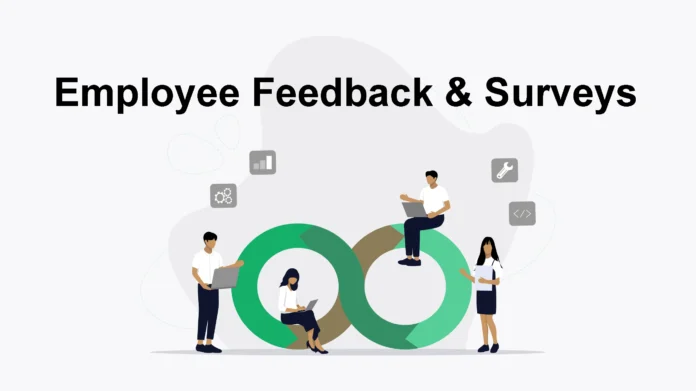Organizations are constantly seeking ways to enhance employee engagement, satisfaction, and productivity. One of the most effective methods for achieving these goals is by collecting and acting upon employee feedback. Employee feedback and surveys have become integral tools in the modern workplace, and the advent of experience software has revolutionized the way organizations gather and leverage insights from their workforce. This article will delve into the significance of employee feedback and surveys and how employee experience software or employee experience analytics is transforming the process of gathering and utilising these valuable insights.
The Importance of Employee Feedback
Enhancing Employee Engagement: Employee feedback is a cornerstone of building a highly engaged workforce. When employees feel heard and valued, they will likely be engaged in their work and committed to the organisation’s success. Regular feedback mechanisms help employees feel connected to the company’s goals and vision.
Improving Job Satisfaction: Gathering feedback allows organisations to identify areas where employees may be dissatisfied or facing challenges. By addressing these issues promptly, organisations can improve job satisfaction levels and reduce turnover rates.
Boosting Productivity and Performance: Constructive feedback can help employees understand their strengths and weaknesses. This insight empowers them to work on areas that need improvement, ultimately leading to increased productivity and better performance.
Fostering a Culture of Continuous Improvement: Employee feedback encourages a culture of continuous improvement within an organisation. It promotes open communication, innovation, and a willingness to adapt to changing circumstances.
The Role of Employee Surveys
Employee surveys are a powerful tool for gathering feedback systematically and comprehensively. They provide a structured way to collect data on various aspects of the work environment, including job satisfaction, workload, communication, leadership, and more. However, the traditional paper-based or email survey methods are increasingly being replaced by experience software solutions that offer several advantages.
Experience Software: Revolutionising Employee Feedback
Real-time Data Collection: Experience software allows organisations to collect feedback in real time. This means that feedback is not limited to annual or quarterly surveys; it can be gathered continuously. Employees can provide input when it matters most, making the feedback process more relevant and actionable.
Customisation and Personalisation: Experience software enables organisations to create customised surveys tailored to their specific needs. Whether it’s a pulse survey to gauge employee morale or a detailed engagement survey, organisations can design surveys that capture the insights they require.
Anonymous Feedback: Confidentiality is crucial for honest feedback. Experience software offers the option for employees to provide feedback anonymously, which encourages candid responses and ensures that employees feel safe expressing their opinions.
Data Analysis and Visualisation: Gathering feedback is only the first step; making sense of the data is equally important. Experience software often comes with advanced analytics tools that help organisations analyse and visualise the feedback data. This allows for better identification of trends and areas that require attention.
Actionable Insights: Experience software goes beyond data collection by providing actionable insights. It can automatically generate reports and highlight critical areas that need improvement. This streamlines the decision-making process and ensures that organisations can take prompt actions based on employee feedback.
Communication and Follow-up: The software facilitates communication between employees and management. It allows organisations to acknowledge feedback, communicate the steps being taken to address issues and follow up with employees to ensure their concerns are being addressed effectively.
Integration with HR Systems: Many employee experience analytics solutions seamlessly integrate with HR systems, making it easier to manage employee data and track feedback over time. This integration streamlines the overall HR processes and ensures that employee feedback is considered in decision-making.
Conclusion
Employee feedback and surveys play a pivotal role in shaping organisational culture, improving engagement, and driving performance. In the workplace, experience software has emerged as a game-changing tool for gathering, analysing, and acting upon employee insights. In today’s competitive business environment, listening to employees and leveraging their feedback is not just a best practice; it’s a strategic imperative for organisations seeking sustained growth and success.


